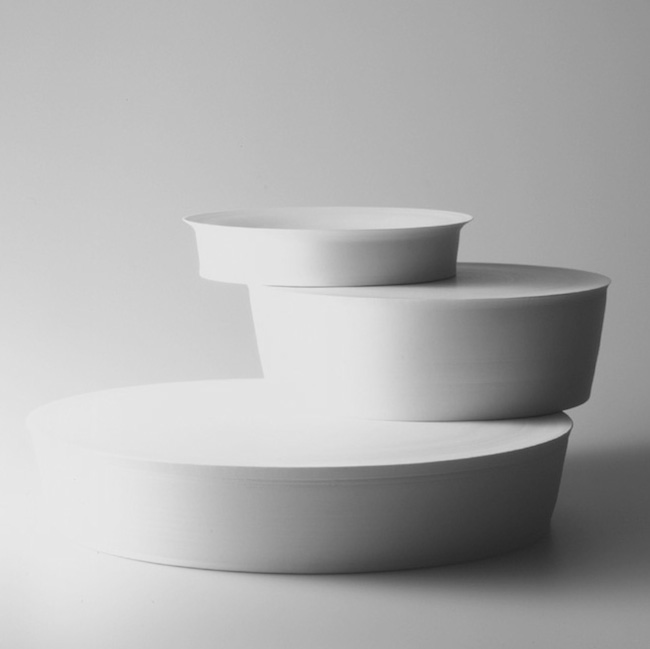Thin, nearly-translucent porcelain forms, often with an asymmetrical shape or features such as a pointedly-slender neck are the contemporary ceramic art of Japanese potter Taizo Kuroda.
Writing for The 189, Daniel Benning described Kuroda’s work as clean and pure porcelain works that emphasize perfection, even as they take on forms that are asymmetrical. He said Kuroda’s work was humbly simple, allowing the eye to focus on a lone “uncluttered object.” Arfchitect Tadao Ando described the porcelain as “pure white” that reflects the color of its maker’s spirit “in the unceasing pursuit of truth.”
Michael Dunn, writing for Kuroda’s web site, said that one of the things that sets the artist apart is the finish on each work. Unglazed, the works use the porcelain to carry the ambient light of the room in which they sit, glowing with a luminescence almost all their own. The surfaces are tactile, bearing fine lines that score the volume of each form. His shapes shine on their own, so much that they can be divorced from the whole of the work and admired separately. Dunn states:
The success of these forms is confirmed by the acid test of seeing them in silhouette − merely by back-lighting his pots so that their lines can be seen without distraction of surface. The effect is uncannily evocative of the paintings of Giorgio Morandi (1890-1964), an artist much admired by Kuroda, and it is no coincidence that collectors often group his wares into similar, but three-dimensional still-life arrangements. Kuroda is also famous for creating completely new ceramic forms such as his flat disks, and “stands” that look like tapering hat-boxes. But he has never made ceramics purely with sculpture in mind, and although his pieces are certainly sculptural in feeling, they all have a practical use.
Born in Japan in 1946, Kuroda studied under Montreal ceramic artist Geatan Beaudin. He later returned to Japan to study under Tatsuzo Shimaoka in Mashiko. In 1975 he worked as a designer for the SIAL pottery company in Canada. Three years later he opened his own studio in St. Gabriel Quebec. In 1991 he built his own residence and studio in Futo, Izu Penninsula, followed a year later by his first exhibition of white porcelain in New York. He’s exhibited across Japan and in New York, with additional shows in Switzerland and San Francisco. His work is in the collections of the Tokyo National Museum of Modern Art, the Cleveland Museum of Art and the Brooklyn Museum of Art.
What do you think of Kuroda’s contemporary ceramic art? Let us know in the comments.









Add your valued opinion to this post.